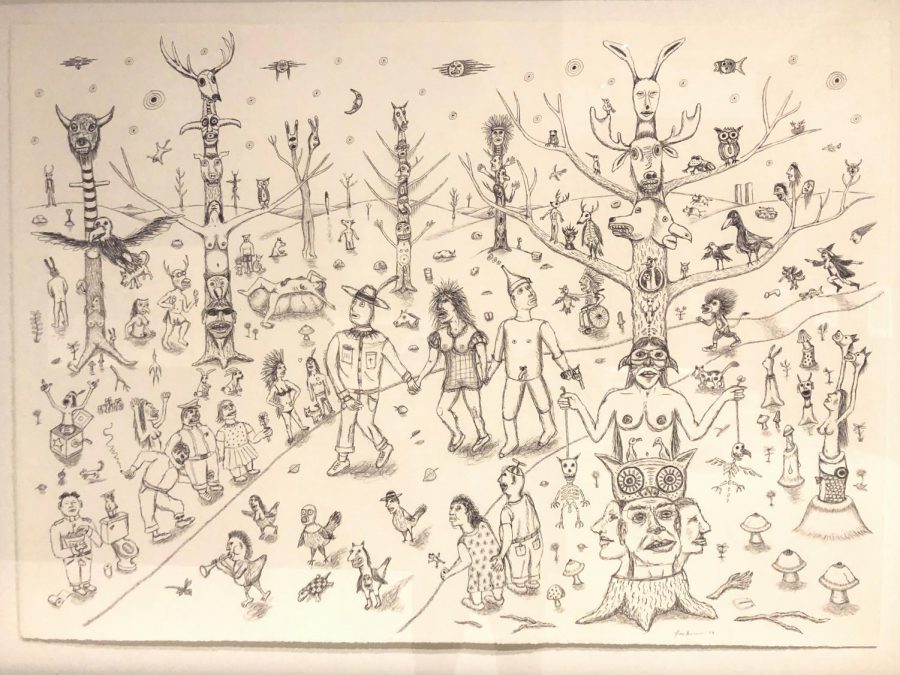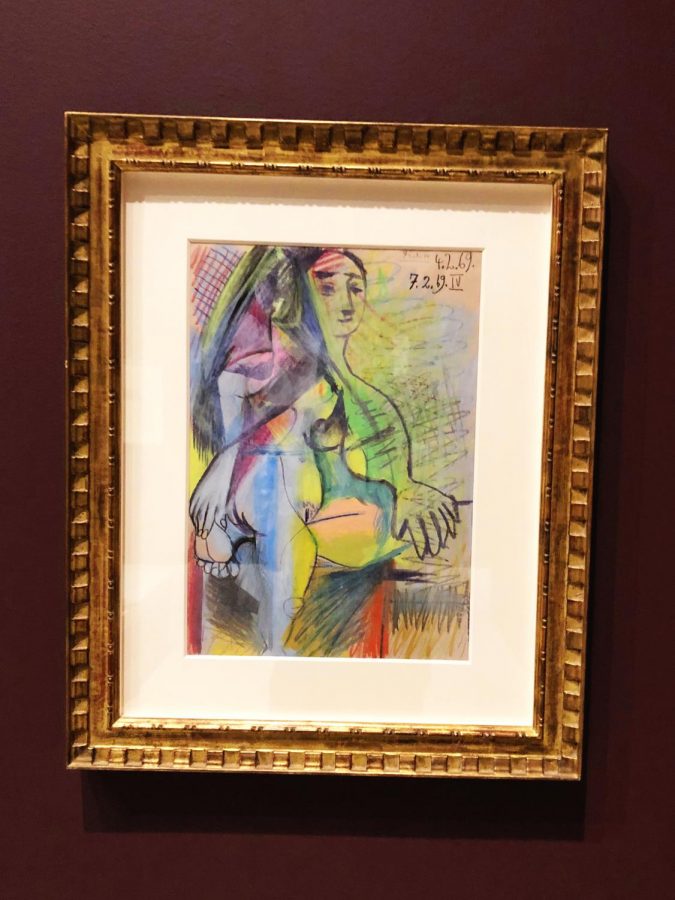Expressionism takes many forms at new Walker Art Center exhibit
December 5, 2019
On Sunday, Nov. 17, the Walker Art Center welcomed a new exhibit entitled “The Expressionist Figure: 100 Years of Contemporary Drawing.” Consisting of pieces donated by longtime Walker donors Miriam and Erwin Kelen and a selection of related Walker holdings, the exhibit explores a rich history of portrait drawing in the United States and Europe, with an emphasis on the expressive character of the figure. Throughout the exhibit, the diverse means by which the artists portray their subjects are tied together via expressionism. The collection features artists like Pablo Picasso, Marlene Dumas, Edgar Degas, Joan Miro and Henri Matisse.
One of the most impressive pieces in the exhibition, titled “Portrait of Skidmore Thorpe” (2008-2019), is an intricate charcoal drawing of an old man, laboriously crafted by the artist Rowan Pope over 11 years. As is the case for many realist portraits in this exhibit, Pope elected to only fully finish the left half of Thorpe’s face, leaving the right half unfinished and his process of construction visible to the audience.
Thorpe’s left side, intricately textured and shaded using many layers of graphite, stands in stark contrast to his right, where Pope’s grid lines and initial stencil outlines of facial features allow us to observe and interpret the artist’s construction process and see the thorough thought and detail that went into the portrait. One is left with a feeling of awe and amazement upon looking at this portrait and noticing the intricacies of its laborious construction.
That piece is contrasted by works like Picasso’s “Nu Couché” (1969), a colorful and abstract colored pencil drawing. Picasso’s later work, in relation to his early cubist and surrealist pieces, is far more expressive, vibrant and colorful and most closely identified with the emerging movement of neo-expressionism. Neo-expressionism, in terms of the human body, is characterized by intentional subjectivity and raw, emotional, brightly-colored depictions. In contrast to Pope’s portrait, the colors strike the audience first — vibrant hues of green and blue dominate the background of the piece.

An interpretation of the term “expressionism” that resonated closely with me is a portrait by Marcel van Eeden, whose portfolio consists primarily of charcoal drawings of print media from before 1965, the year he was born. This project, titled “The Encyclopedia of My Death,” sees van Eeden utilize photographs, catalogues, newspapers, magazines and illustrations to create depictions of life before his time. All marks are based on perceptions conveyed from media he selects.
The piece of his on display is based on a photograph of Italian dictator Benito Mussolini and a few of his compatriots after their hanging in a public square. In it, van Eeden uses only monochromatic tones and focuses on the emotional power of the colors rather than the images themselves.
A common theme in the exhibit is the abstract expression of the human body. Through the utilization of graphite, watercolor, crayon, pastel, collage and ink — to name a few — this exhibit invites us to observe the body in ways both familiar and new. The variety of materials highlight the complexities of the human figure, but do so in different ways as the time period, artistic styles, materials, color, texture and tone differ drastically between pieces. Portraying figures in an abstract and subjective way puts the burden of closure with regards to the meaning of the piece on the audience, rather than the artists.
Unlike many exhibits, the majority of the works in “The Expressionist Figure” are part of a personal collection, built over the course of six decades. Aside from the loose definition of expressionism, the many pieces do not have much in common. The dates of these pieces’ creations span a century. The styles and materials used are just as varied. Instead, the exhibit is tied together by the unique interpretation of “expressionism” that the Kelens, the donors who provided the majority of the exhibits art, have cultivated through their collection.
“The Expressionist Figure: 100 Years of Contemporary Drawing” is on view at the Walker Arts Center until April 19.













